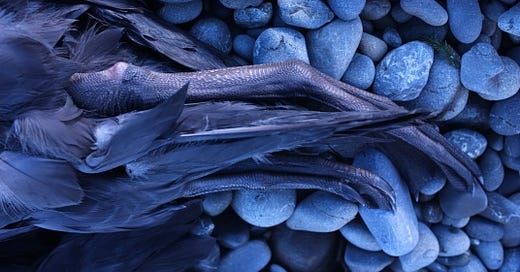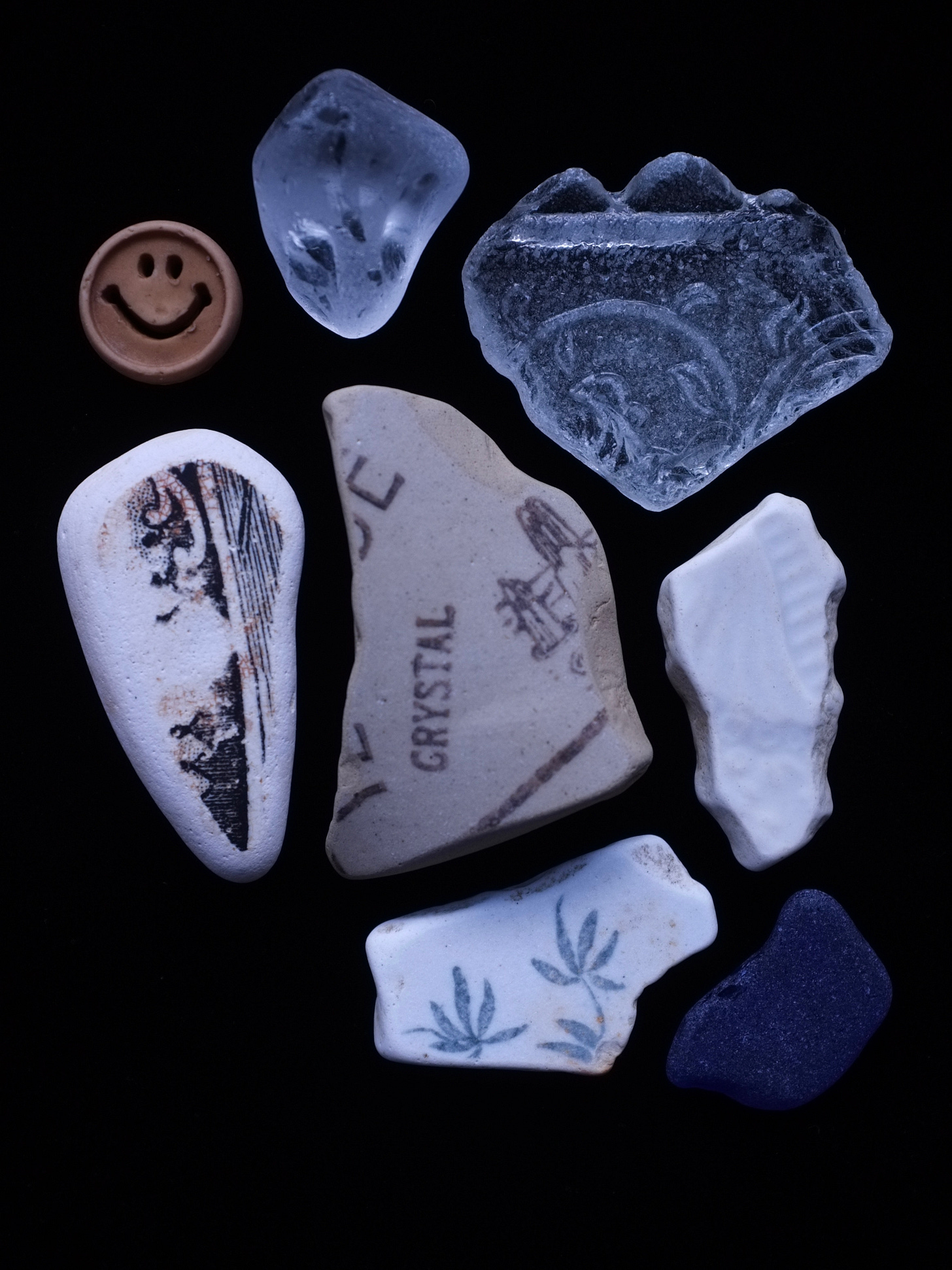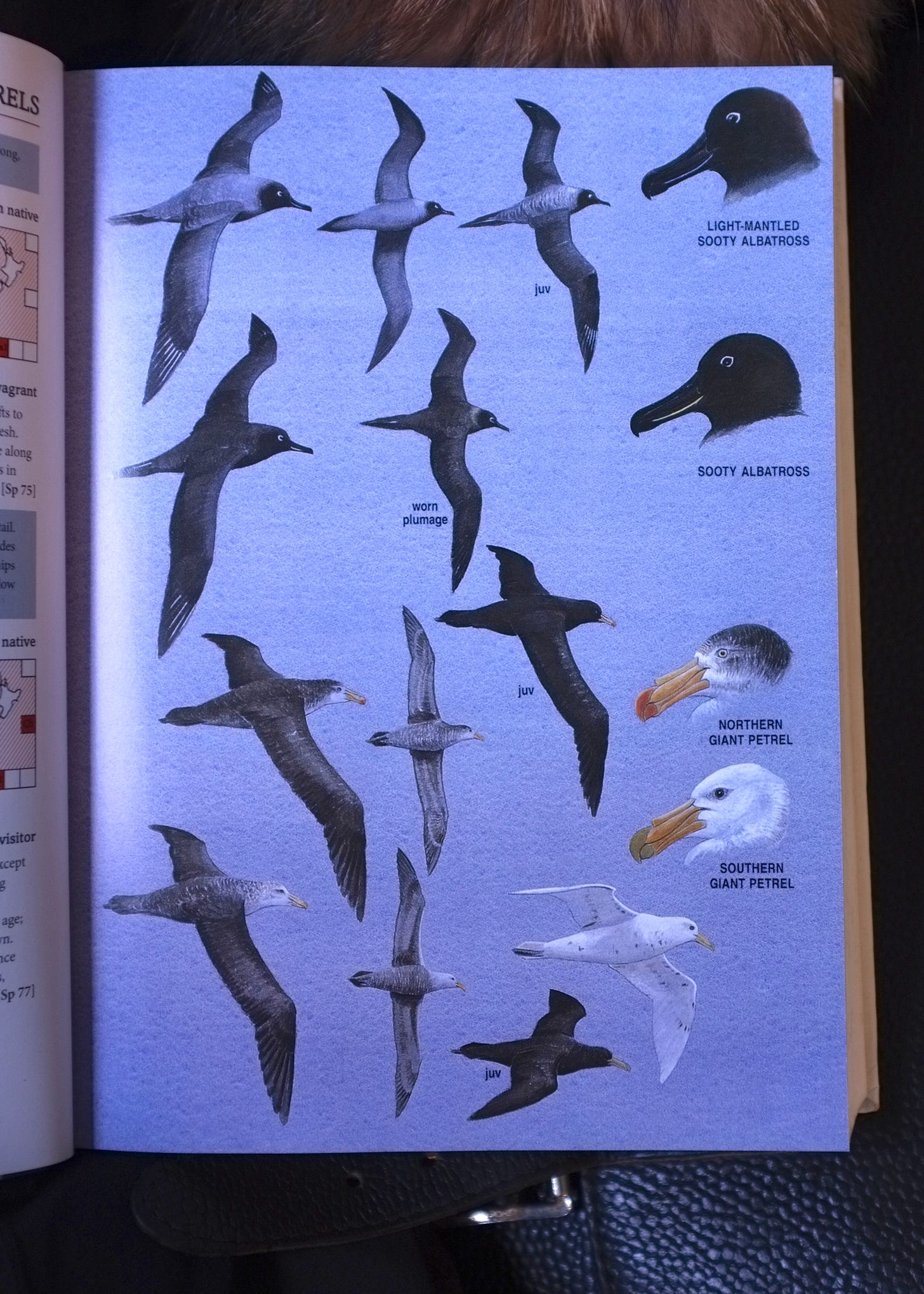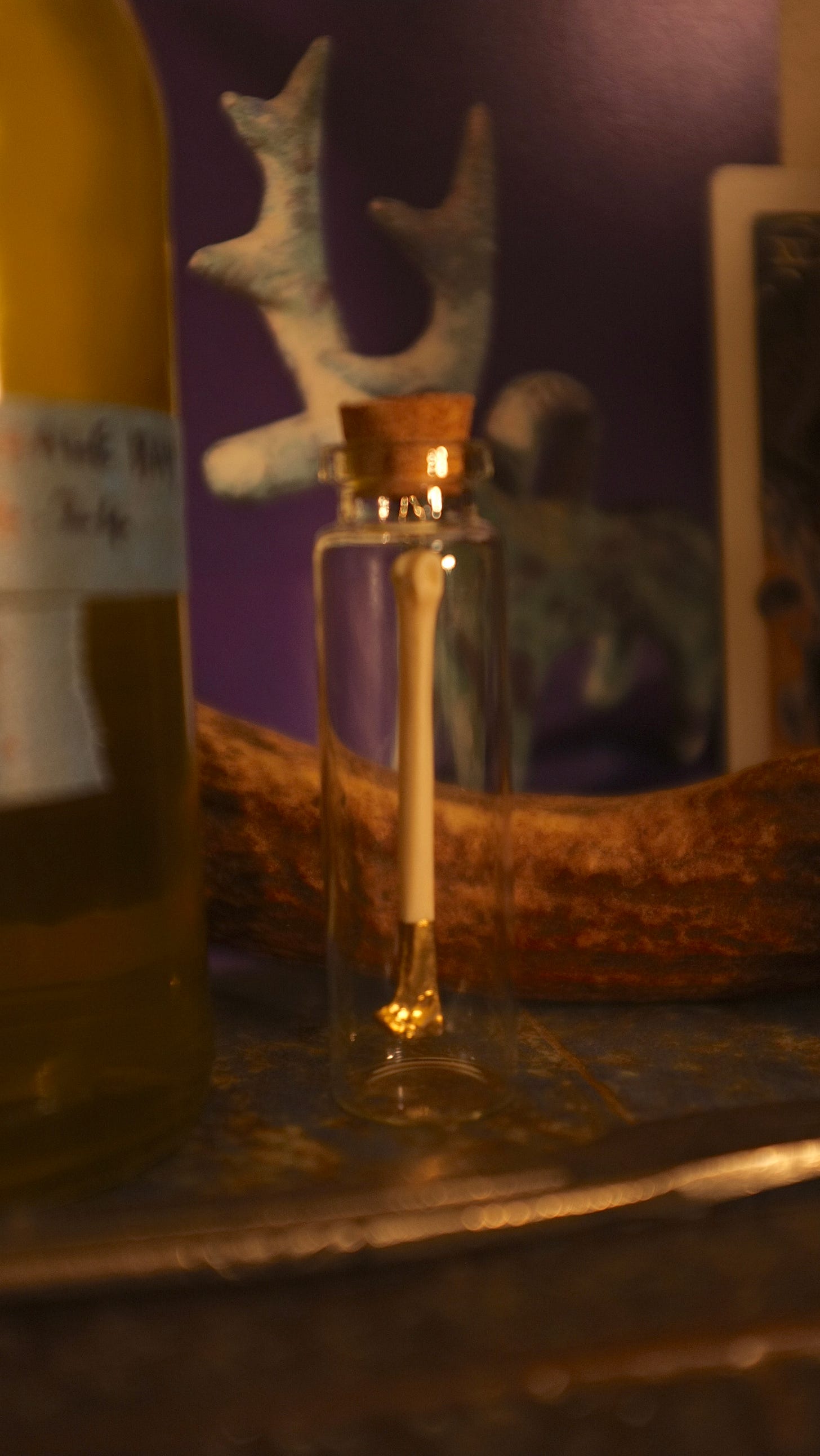Winter Solstice: a glass dome day, clear, bright, still, cold, brief. I went to the beach in the afternoon with thoughts of finding driftwood vines to twine into a crown. Tie some twigs on, antler-fashion. But the beach is not a supermarket. It’s more like the restaurant of a maverick-genius chef.
My tall neighbour was going down to swim in the icy sea.1 Hardcore! He often takes his little sons in too, even in Spring and Autumn— a Fatherly method for building resilience of character— but this time he was alone. Winter swimming has become more of a thing over the last few years, and I now see swimmers all year round.
The tide was high and I walked just under the lip of stones, at the top of the wetness. The waves sometimes sculpt the stones into a form much like a long breaking wave. My gaze was fixed on the stones under my feet but suddenly something called me to look to my right, to the crest of the stone wave. It might have been a dark shape out of the very tail of my eye, or more likely a scent, the distinctive musky, peppery smell of seabird:
A wave must have laid it there, long enough ago for the tops of the pebbles underneath to dry out, but it looked fresh; the feathers disarrayed but no sign of decay. It was a new species to me, I thought probably a mollymawk. A hulking thing. This enormous beak:
And these dragonish legs:
An interesting omen, a novel bird, a bird of the open sea. I went over to the creek. There were tourists standing on the rocks, and a small child who ran through the creek and back again with shoes and socks on, which made me laugh. The lines of wrack spoke. I can tell when it’s a good day by the ratio: if there’s anything to be found, I will start to see things very quickly. After quarter of an hour’s hunting, this is what I found:
My bird Bible, The Field Guide to New Zealand Birds, has page after page of seabird plates, and I flick through them, Kermadec Storm Petrel, Pink-Footed Shearwater, Sooty Albatross. At the same time, I am clicking boxes on New Zealand Birds Online. Was your bird washed up on a beach? Which of these birds did it most resemble? OK, which of THESE birds? Both roads lead to the same end. The combination of dark plumage and a light bill, and the strange fused nostril: a dark morph (juvenile?) Pāngurunguru2 / Northern giant petrel, Macronectes halli. It’s a Subantarctic creature, distribution Circumpolar.
NZ Birds Online offers the following charming aliases: nelly, stinker, giant fulmar, glutton, stinkpot, sea vulture. The page includes a single sound file recorded on Campbell Island: Adult on nest with egg, threatening to regurgitate at recordist, and informs me that They are aggressive and opportunistic seabirds that scavenge penguin, albatross, seal and whale carrion, ship offal and kelp. They prey on penguin and albatross chicks and other seabirds up to the size of an adult albatross. They also take fish and squid from the sea surface.
I have a sudden memory of a nature documentary, probably from the BBC, a floating carcass (a whale or seal?) and a wide-angle, almost fish-eye lens filming, in painfully crisp high-definition, a mob of seabirds scrapping for rotten flesh on top of the sunlit water: the yelling and fighting, the wandering albatross crash-landing like a jet plane, dwarfing the squabbling mollymawks and petrels, the tiny, delicate prions at the edge of the melee, picking at drifting shreds of meat.
(I must have smelt it, because Adult birds and chicks have an intense, foul smell like putrifying flesh.)
The Field Guide tells me that Up to the 1970s, when sewage and abattoir waste were dumped into Wellington Harbour and a whaling station operated just inside the entrance to Tory Channel in the Marlborough Sounds, hundreds of giant petrels (probably mainly of this species) were seen in the Cook Strait area, especially in October - March. Now that these sources of offal have gone, only the odd bird is now seen following fishing boats and the Cook Strait ferries.
So basically, they’re a little arsehole, by the sounds of it— but this is likely true of any noble seabird seen gliding majestically, its sooty-browed gaze fixed on the distant horizon: seabirds tend to be fighty and gluttonous. Last night as I waited for the bus at dusk I saw a stream of distant black-backed gulls rising from the vicinity of the Dump— their daytime hangout— cruciform specks lofting like sparks from a fire, then dropping down to the beach to spend the night.
Of the fragments, one was a real find, the stoneware fragment with the word CRYSTAL, because I recognised the fountain motif in the middle as belonging to a piece I’d found some years back: it was possible, I thought, that this was literally the other half of the same label, and when I got it home the two pieces would fit together. But no:
Two different bottles, but nevertheless two halves of the same label. I track down the bottle online: Wanganui & Petone ginger beer bottle.3 Now I can see that it's something like an olden day can of Coke, just a small drink. Such things were made at Petone because that’s where the mighty and ancient Waiwhetu artesian aquifer (that still provides between 40% and 70% of Wellington’s drinking water) rises to the surface. The motif in the centre of the label, and the angled words, refer to these springs.
The spring motif reminds me of stalactites: water rendered in a way that looks like a stone-form, made by the action of water, on the label of a bottle that is called ‘stoneware’ worked upon by the action of the sea— that is, shaped by water. The springs on the label are also somewhat human-shaped, like Rapa Nui moai, or like Antony Gormley’s cast-iron self-portraits set on Crosby Beach, covered and uncovered by the sea.
So here we have two opposing omens for the darkest point of the year: filth and purity. A scavenging bird that feeds on offal, and the springing forth of crystal water from the ground. Looked at another way, both are a kind of gift, the carrion and the water, harvested, drawn, providing sustenance and life. Each to their own.
A small punctuating omen, though, is that smiley-face button, worn brown by age: I guess maybe it was originally peach-coloured. I find a lot of buttons on the beach that I don’t pick up, because I’m a button-snob and they’re mostly made of plastic— that’s what floats— but this one was a goody. Such buttons are made for children, to coax them to learn to button, and are often chosen by Grannies to adorn a lovingly hand-knitted cardigan. This particular smiley-face form is one I’ve always enjoyed the lineaments of (I must have had those buttons myself, as a kid, because they have that extra resonance bestowed by nostalgia). The extra-wide smile with the serifs at either end, the eyes tall, reading as widened in delight: it all adds up to a gleeful grin, a happy baby.
Winter is a good season in Wellington, beautiful and magical, with Solstice and Matariki celebrations spread out over many nights, fire to carry us through the dark and cold. Last night I went to Lōemis’ Wolf Run, where I was befriended by a cool seven-year-old, who showed me his owl call and asked politely if he could borrow my scooter. He was sparky, wild, an elf-kid, with silky blonde curls cropped at the sides and wolf face-paint. His name was Abel, and he reminded me of Amos when we first met— name (beginning with A, double-syllabled, arcane), age, colouring, confidence, that intrinsic electricity. The almost-full moon was hanging in the inky sky over the mountain. Everyone howled together. As we walked he rode my scooter and I held his forked stick. It was a child-sized staff, but I held it over my head: Wizard business.
Last weekend I went to the Great Hall Market, where I bought this artefact:
It’s a hare’s legbone in a glass bottle, dipped in gold, and, as the stallholder demonstrated, you can ring it like a bell. Magic is afoot! I’m publishing this right on full moon, catching the luminous wave towards the lightening days ahead. Happy Solstice one and all!
Not literally icy, just very cold
According to Te Aka, pāngurunguru also means a double bass. Nguru refers to bass-nesss, or grunting: it also means a nose-flute
In the modern age, the best ginger beer in Wellington is Hardie Boys, made by my friends Rebecca and George: https://www.rnz.co.nz/national/programmes/thiswayup/audio/20159980/ginger-beer












Update: around 10 p.m. on the night of the 21st / Winter Solstice, the Cook Strait ferry Aratere ran aground just North of Picton. It was a freight sailing, so the passengers were truck drivers (petrel / petrol) and the cause of the grounding was said to be a steering failure. The immediate public response was scorn and a kind of collective 'Well, DUH!' towards the Government, who recently cancelled a contract for new ferries. (The ferries are the sole, fragile land transport link between the North and South Islands.)
I link this to the omen of the beached petrel because of the passage I quoted from The Field Guide to the Birds of New Zealand: "only the odd bird is now seen following fishing boats and the Cook Strait ferries."
The beach sleuth, pulling together a solid case for the Defense (or prosecution) from some random clues and fragments! Well spotted Wiz!